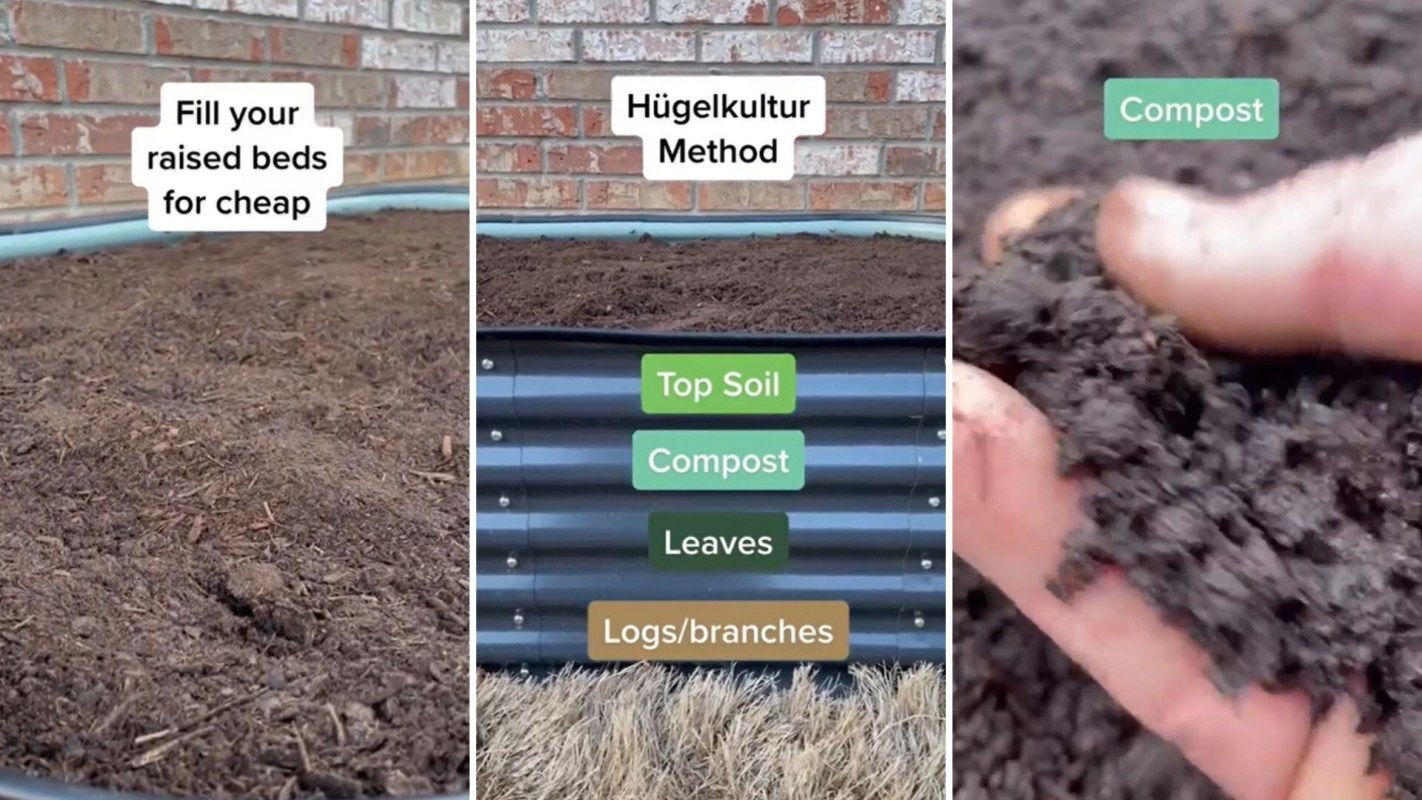A raised garden bed isn't just an effective farming technique. It's also an easy trick that could make your backyard garden much easier — and cheaper — to maintain.
In a recent video, Instagrammer Matt Cooper (@mygardenburner) shows how to fill a raised bed by using the "Hugelkultur" method," explaining, "not only are you saving money, you're also adding incredible biological life to your bed"
The scoop
The Hugelkultur method is a centuries-old method for building a raised garden bed. Meaning "hill culture" in German, the word refers to a practice that can be found throughout Europe and is based on the natural decomposition of layered organic material.
As explained in the Instagram Reel, the first layer of these gardening beds consists of decaying logs and branches. This is followed by a layer of leaves, which helps to further break down the woody mass below. The final two layers are made of compost and topsoil.
How it's helping
By following the Hugelkultur method, you can save money on filling your raised beds by gathering logs, tree branches, and leaves from your own property or a nearby wooded area.
Many towns and cities have composting centers where you can receive compost free of charge or for a small fee. Topsoil is the only layer you may need to purchase from your local gardening store.
If you are an urban gardener, try contacting your local government or a local tree surgeon for assistance in attaining what you need.
When using the Hugelkultur method, you will naturally be helping the planet by saving resources. The bottom layer provides a long-lasting supply of nutrients as the logs and branches break down over time.
This eliminates the need for adding additional organic fertilizer for years to come. This layer will also act as a sponge, holding water and keeping the bed moist for long periods of time, which is especially helpful in arid climates. And, of course, the end result will be a healthy harvest of vegetables and fruits that don't require fuel for production or shipping.
What everyone's saying
Overall, comments on the video show a general consensus that the method was indeed a viable gardening technique.
"Seems like it somewhat resembles the idea of how healthy soil is naturally created," says one Instagrammer.
Other commenters provide some advice.
"Yes, I use this … I also add all of my vegetable peelings..banana skins..and fruit cores.. torn-up cardboard," says one user.
Another Instagrammer adds, "Lightly soak those layers in as you add them. And do not compact the layers. Decomposition needs a little water and air (oxygen) to help get it started."
Join our free newsletter for easy tips to save more, waste less, and help yourself while helping the planet.









